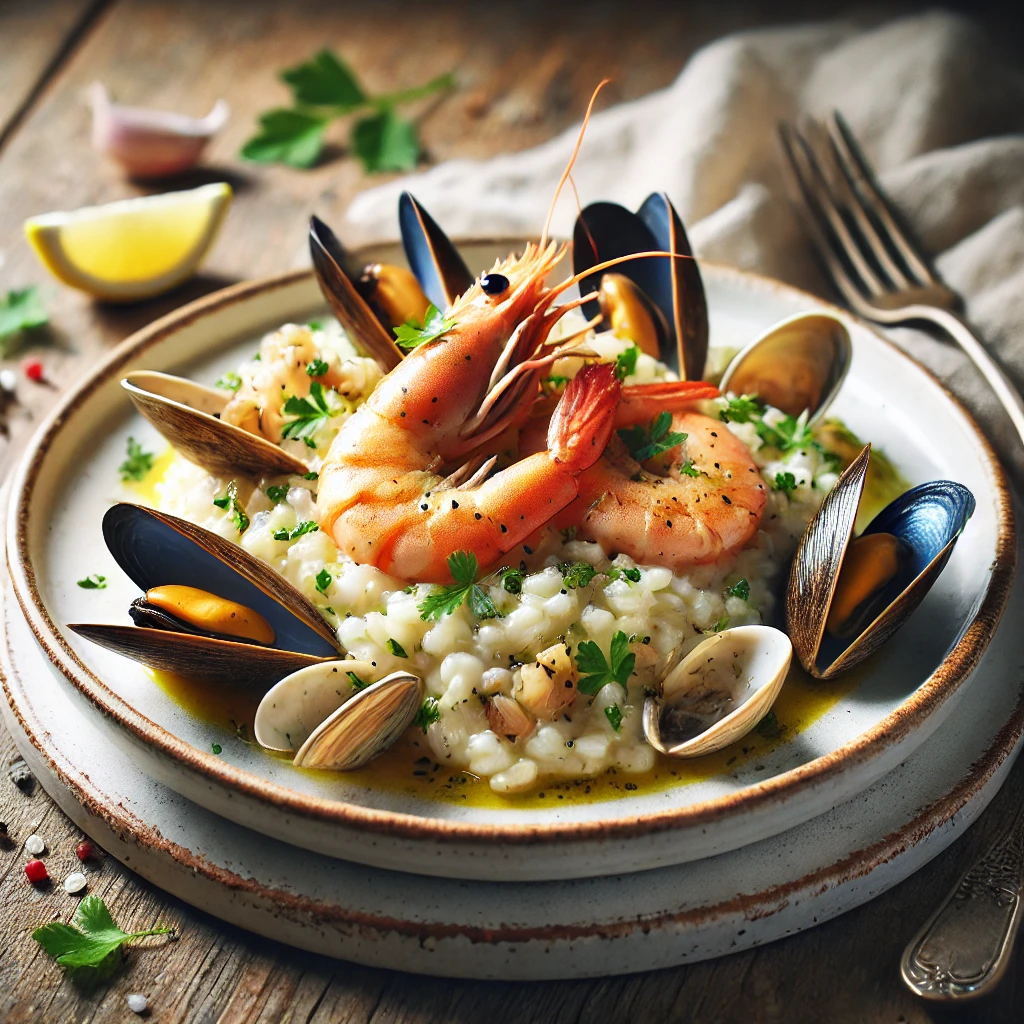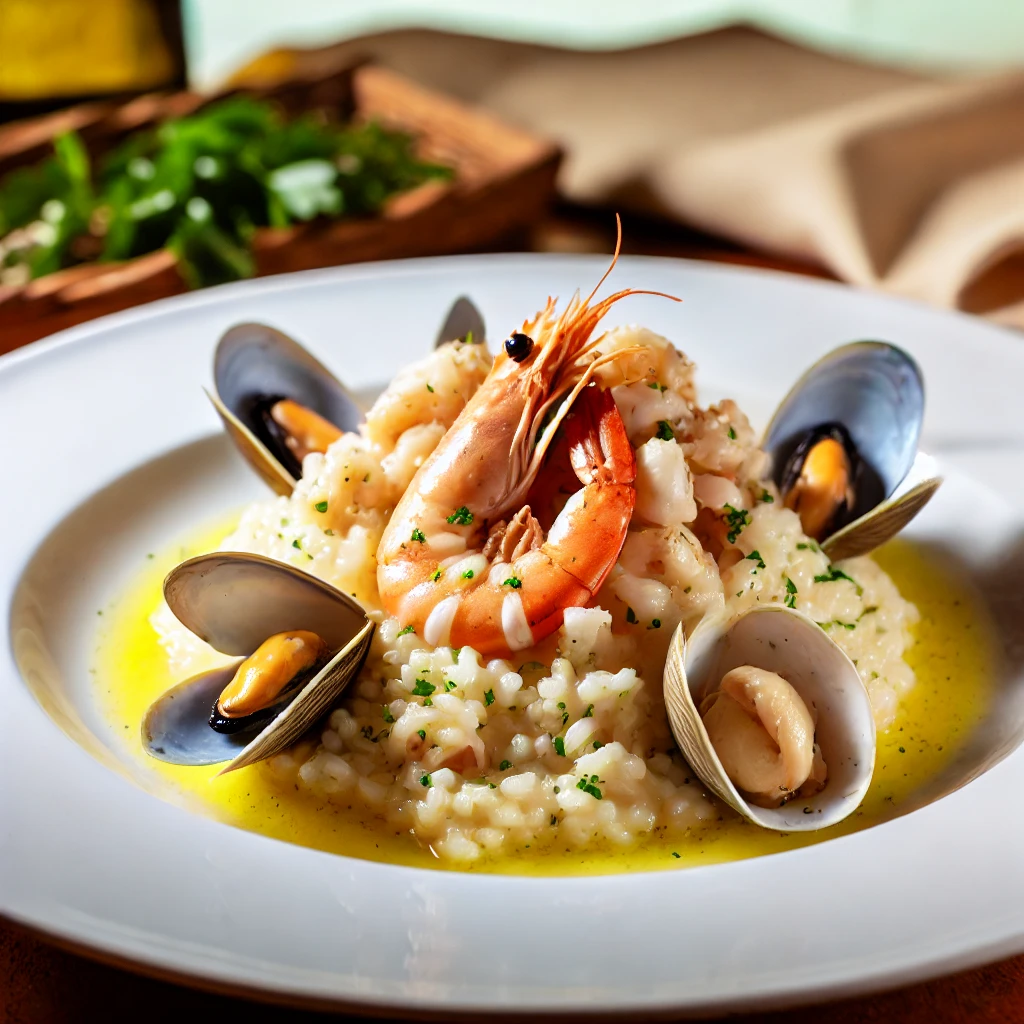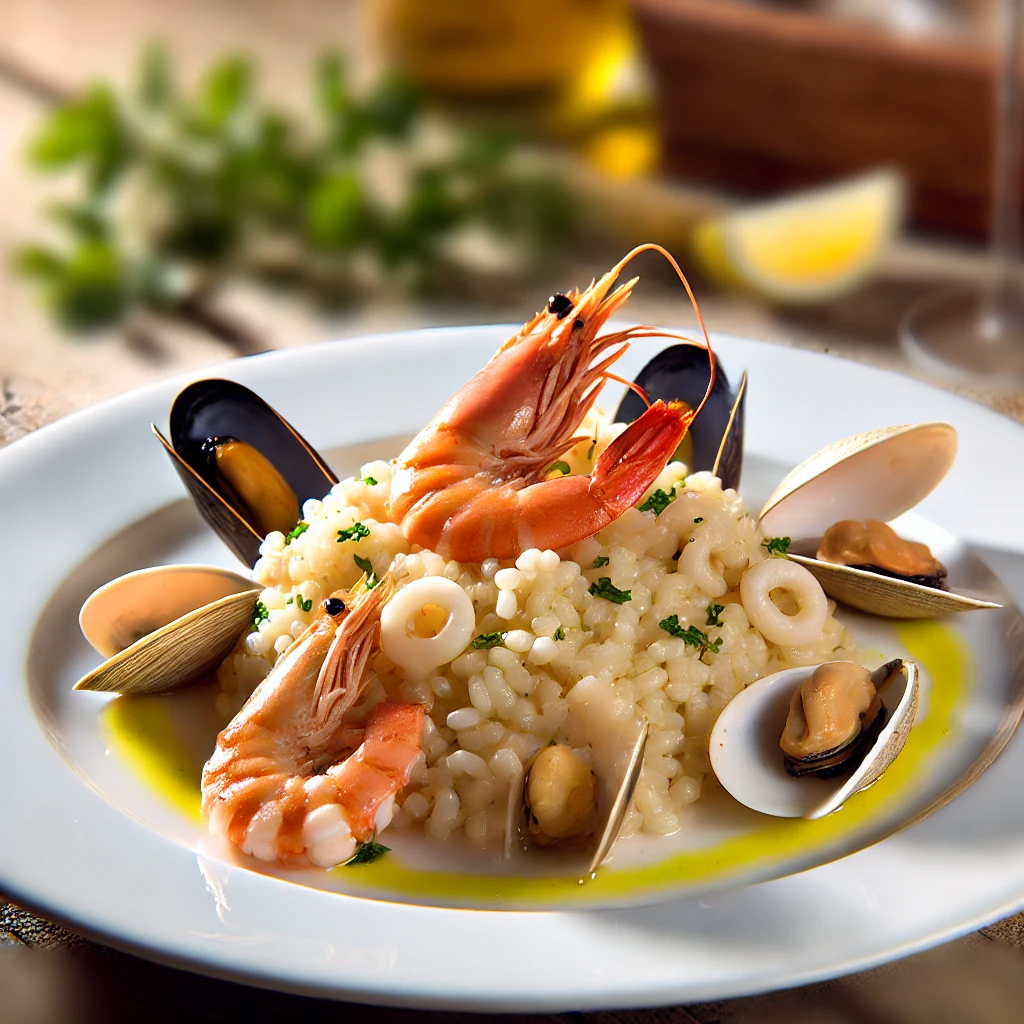Italian cuisine is celebrated worldwide for its rich flavors, diverse ingredients, and timeless recipes. Among its many treasures, risotto stands out as a quintessential dish that embodies the heart and soul of Italian cooking. This creamy, velvety rice dish is more than just a meal; it’s a testament to the Italian way of life, where food is prepared with love, patience, and an unwavering commitment to quality. In this blog post, we’ll delve deep into the world of Italian risotto, exploring its history, regional variations, cooking techniques, and some mouthwatering recipes that you can try at home.
A Brief History of Risotto
Risotto’s origins can be traced back to the northern regions of Italy, particularly Lombardy and Veneto, where rice has been cultivated for centuries. Rice was introduced to Italy by the Arabs during their occupation of Sicily in the 10th century, but it wasn’t until the 14th and 15th centuries that rice cultivation spread to the fertile plains of the Po Valley in northern Italy. The region’s flat, water-rich landscape provided the perfect conditions for growing rice, leading to its widespread adoption.
The word “risotto” itself comes from the Italian word “riso,” meaning rice. The dish as we know it today began to take shape in the 16th century when rice became a staple food in northern Italy. Unlike pasta, which was more popular in the southern regions, rice was embraced by the northerners, who developed various methods of cooking it. The technique of slow-cooking rice in broth, allowing it to absorb flavors gradually, eventually gave rise to the risotto we know and love today.
The Essential Ingredients
The beauty of risotto lies in its simplicity. The basic ingredients are few, but each plays a crucial role in creating the dish’s signature creamy texture and rich flavor. Here’s a breakdown of the essential components:
-
Rice: The type of rice used in risotto is critical. Arborio, Carnaroli, and Vialone Nano are the three most common varieties, each with its own characteristics. Arborio rice, with its high starch content, is perhaps the most popular choice. Carnaroli, often referred to as the “king of rice,” is prized for its ability to absorb liquid while maintaining a firm texture. Vialone Nano is known for its shorter grain and is favored in Veneto for making risotto all’onda, a looser, wave-like version of the dish.
-
Broth: The broth is the foundation of risotto, providing the liquid in which the rice cooks. While chicken broth is commonly used, vegetable, beef, and seafood broths are also popular, depending on the type of risotto being made. The broth should be hot and added gradually to ensure the rice cooks evenly and absorbs the flavors fully.
-
Onions or Shallots: A small amount of finely chopped onion or shallot is typically sautéed in butter or olive oil at the beginning of the cooking process. This forms the base of the dish, imparting a subtle sweetness that complements the rice.
-
Wine: White wine is traditionally used to deglaze the pan after sautéing the onions. The wine adds acidity and depth to the dish, balancing the richness of the butter and cheese. Red wine can also be used, particularly in risottos with bolder flavors, such as those made with mushrooms or meats.
-
Butter and Cheese: Butter is often added at the beginning and end of the cooking process, contributing to the dish’s luxurious texture. Parmesan cheese, or Parmigiano-Reggiano, is the most commonly used cheese in risotto, lending a salty, umami-rich flavor that enhances the dish’s overall taste.
-
Other Ingredients: Depending on the type of risotto, additional ingredients can include a wide range of vegetables, meats, seafood, and herbs. Some classic examples include mushrooms, saffron, seafood, and asparagus.
The Art of Cooking Risotto
Making risotto is both an art and a science. It requires attention to detail, patience, and a bit of practice, but the result is well worth the effort. Here’s a step-by-step guide to mastering the technique:
-
Prepare the Ingredients: Before you start cooking, gather all your ingredients and have them ready to go. This includes heating the broth, chopping the onions, and measuring out the rice and wine.
-
Sauté the Onions: In a large, heavy-bottomed pan, melt a small amount of butter or heat some olive oil over medium heat. Add the chopped onions or shallots and sauté until they become translucent, about 5 minutes. Be careful not to let them brown, as this can alter the flavor of the risotto.
-
Toast the Rice: Add the rice to the pan and stir it to coat the grains in the butter or oil. Toast the rice for 2-3 minutes, stirring constantly. This step is crucial as it helps the rice retain its firmness during cooking and enhances its nutty flavor.
-
Deglaze with Wine: Pour in the wine and stir until it’s mostly absorbed by the rice. The wine adds a lovely acidity to the dish, balancing the richness of the butter and cheese that will be added later.
-
Add Broth Gradually: Begin adding the hot broth, one ladleful at a time, stirring constantly. Allow the rice to absorb the liquid before adding more. This slow addition of broth is what gives risotto its creamy consistency. It usually takes about 18-20 minutes for the rice to cook through.
-
Stir Constantly: Stirring is key to achieving the right texture in risotto. It helps release the starch from the rice, which thickens the broth and creates that creamy, velvety sauce. However, be gentle with your stirring to avoid breaking the grains of rice.
-
Finish with Butter and Cheese: Once the rice is al dente and the dish has reached the desired consistency, remove it from the heat. Stir in a final knob of butter and a generous handful of grated Parmesan cheese. This step, known as “mantecatura,” adds a luxurious richness to the dish.
-
Serve Immediately: Risotto is best enjoyed fresh, straight from the pan. Serve it in warm bowls, garnished with extra cheese, herbs, or a drizzle of truffle oil, depending on the recipe.
Regional Variations of Risotto
One of the most fascinating aspects of risotto is its versatility. While the basic technique remains the same, the ingredients can vary widely depending on the region of Italy, resulting in a diverse array of risotto dishes. Here are some of the most famous regional variations:
-
Risotto alla Milanese: This iconic dish from Milan is perhaps the most famous risotto of all. It’s distinguished by its vibrant yellow color, achieved by adding saffron to the broth. Risotto alla Milanese is often served as a side dish to Osso Buco, a slow-cooked veal shank.
-
Risotto al Barolo: Hailing from the Piedmont region, this risotto is made with Barolo wine, one of Italy’s finest red wines. The wine gives the dish a deep, rich flavor and a beautiful ruby-red hue. It’s often paired with hearty meats like beef or game.
-
Risotto al Nero di Seppia: This striking black risotto is a specialty of the Venetian lagoon. It’s made with cuttlefish ink, which not only gives the dish its dramatic color but also imparts a briny, seafood flavor. It’s typically garnished with tender pieces of cuttlefish and a squeeze of lemon juice.
-
Risotto ai Funghi: Mushroom risotto is a beloved dish throughout Italy, but it’s particularly popular in the northern regions where wild mushrooms are abundant. Porcini mushrooms are often used, adding an earthy, umami flavor to the dish. It’s a perfect comfort food for autumn and winter.
-
Risotto alle Verdure: In spring and summer, risotto with fresh vegetables like asparagus, peas, and zucchini is a common dish in Italy. The vegetables are often lightly sautéed or blanched before being added to the risotto, resulting in a light, fresh, and colorful meal.
-
Risotto alla Pescatora: Seafood risotto, or “risotto alla pescatora,” is a coastal Italian favorite. This dish is packed with a variety of seafood, such as shrimp, mussels, clams, and calamari. The seafood is cooked in a flavorful broth, which is then used to cook the rice, infusing it with the taste of the sea.
Classic Risotto Recipes to Try at Home
Now that you’ve learned about the history, ingredients, and techniques of risotto, it’s time to try making some yourself. Here are a few classic recipes to get you started:
-
Risotto alla Milanese
- Ingredients: Arborio rice, chicken broth, saffron, onions, white wine, butter, Parmesan cheese.
- Instructions: Follow the basic risotto technique, adding saffron to the broth before incorporating it into the rice. Serve with a sprinkle of Parmesan and a side of Osso Buco for a truly authentic Milanese experience.
-
Mushroom Risotto
- Ingredients: Arborio rice, vegetable broth, a mix of fresh mushrooms (porcini, cremini, shiitake), onions, garlic, white wine, butter, Parmesan cheese, fresh parsley.
- Instructions: Sauté the mushrooms with garlic before adding them to the risotto. Finish with a touch of cream for extra richness.
-
Seafood Risotto
- Ingredients: Carnaroli rice, seafood broth, a mix of seafood (shrimp, mussels, clams, calamari), onions, garlic, white wine, butter,








